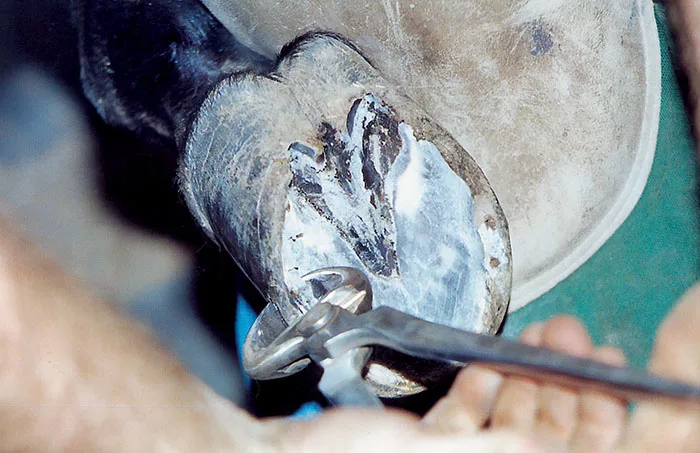American Farriers Journal
American Farriers Journal is the “hands-on” magazine for professional farriers, equine veterinarians and horse care product and service buyers.

It's nothing fancy. It’s not going to win you any awards or get your face on the cover of a magazine, but shoeing and trimming a horse with proper physiologic principles will make you a better farrier and, more importantly, keep your horses’ feet healthy, according to Dr. Stephen O’Grady. O’Grady, who spoke about this topic at last fall’s Purina Mills Farrier Clinic outside of St. Louis, Mo., is an equine veterinarian and a farrier in The Plains, Va.
He defines physiological horseshoeing as that which:
With this in mind, farriers and veterinarians should know the major areas that trimming and shoeing can affect:
When farriers and vets use the term “normal” foot, O’Grady gets confused.
“When you say you have a normal foot, I don’t know what that means,” O’Grady says.
Instead, he prefers the term “functional” foot. A functional foot possess five characteristics:

A NORMAL FOOT? O’Grady says he doesn’t know what a “normal” foot would be, so he uses the term “functional” foot.
O’Grady says solid heel base is when the “angle of sole, bar and outer hoof wall form a unit. You’d like to have the…